DIY Escape Room
As an Amazon Associate, I earn from qualifying purchases. We may receive a commission for purchases made through these links. This site also contains affiliate links to products besides Amazon, like Etsy. We may receive a commission for purchases made through those links too (at no additional cost to you).
Make Your Own Escape Room
Escape rooms have become fun interactive ways to spend time with friends and family while working together to solve riddles and puzzles in order to ‘escape’ from a room. When you take a group to a professional escape room, you typically pay per person so the cost can add up quickly. If you have a small group, you may end up being combined with strangers so the company can make the most profit. If you create your own escape room, you have a fun game that you can use repeatedly. Making a DIY escape room can be as easy or hard as you would like it to be. Here is a simple guide to help walk you through the steps and to get some fun ideas on how to make it a bit more special.
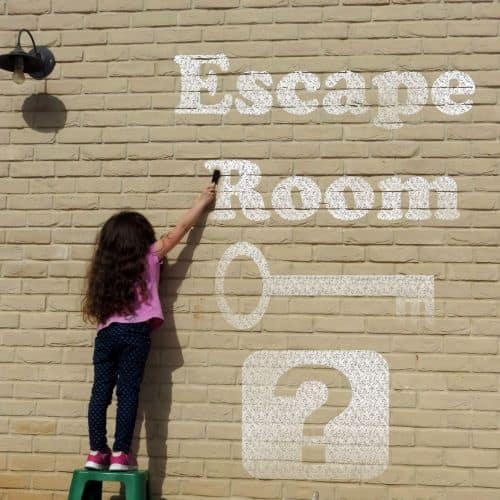
What is an Escape Room?
An escape room is basically a game where the player or players must find and solve different clues and puzzles until they can successfully escape the room. It is a cooperative game which makes it a great team-building exercise because it is best when everyone works together. You can now find escape room board games, where the whole game is played out at the table, but this guide is how to create the original escape room, where the puzzles are hidden throughout an actual room.
Who is it for?
When creating your DIY escape room, the first thing to do is to figure out who you will be making it for. To be more specific, what the average player’s skill set will be. Are they small children? Do the players have strong problem-solving skills? Are there any special needs that may need to be addressed? How is their attention span? A typical escape room for adults generally is designed to take about an hour for the players to solve the puzzles and escape the room. The best part of making your own escape room is that you can cater to your audience’s needs. This means you can make the room shorter and the clues less difficult if need be.
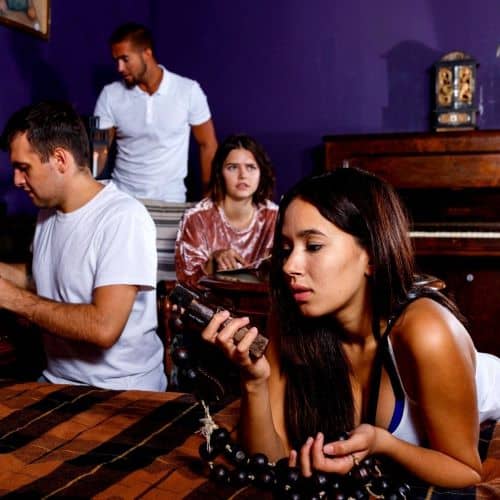
Escape Room Theme
Now that you have your audience in mind, it is time to pick your escape room’s theme. Will it be for a special event like a holiday, birthday, or bachelor/bachelorette party? Or will it be a general room? If you are focusing the game around a specific theme, you will want to keep that in mind when you are putting together the different hints and puzzles. Don’t worry, it is fairly easy to modify your escape room to fit a new theme if needed. This means that with minimal changes, you can use your original game to celebrate numerous occasions.
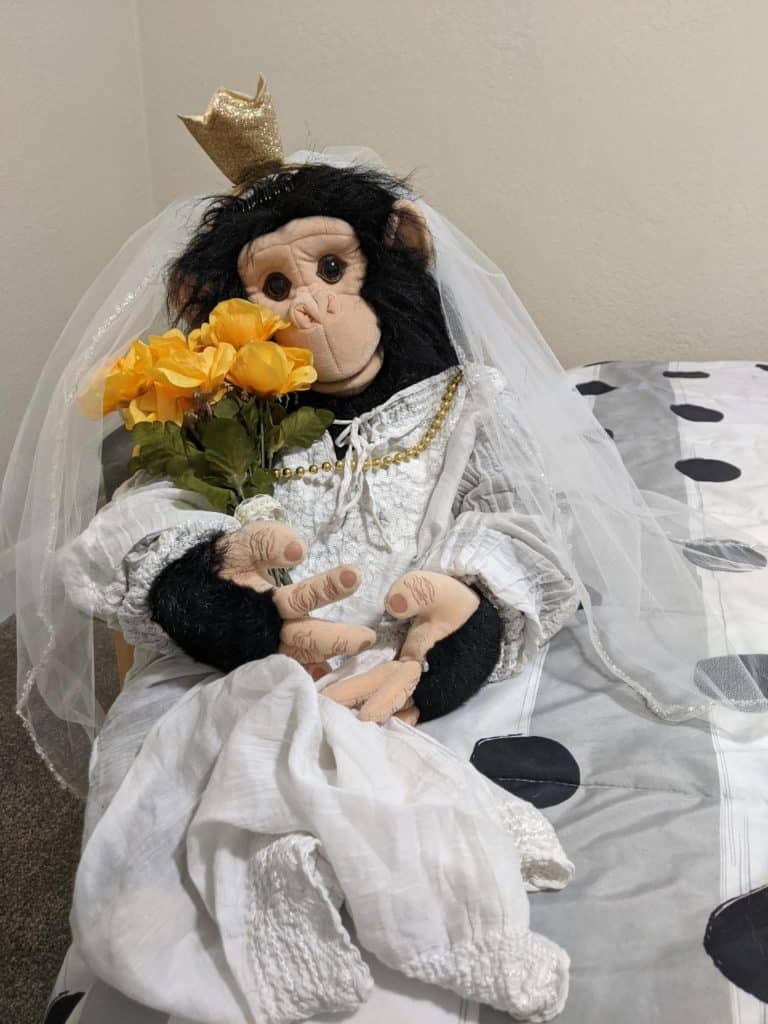
Pick the Room
The next step will be selecting the best room to set the game up. There are several things to consider when picking a room.
- Are there good hiding spots for clues? You can always bring in items to hide clues as long as they can blend in with the room decor.
- Are there areas in the room that need to be off-limits? These places will need to be blocked off somehow and players informed of this before the game is started.
- Are there items in there that are valuable/breakable? If the players might get a bit rowdy, you will want to avoid rooms that have items that may be broken or remove those items before you play the game.
- Are there any safety concerns? Make sure that everything in the room (i.e., furniture) is stable. This is especially important if the players are smaller children.
- Is the room big enough for the number of players that will be involved and the room moderator? (The room moderator is there to help the players along if needed and make sure they follow the rules.)
Once you have picked the best room to create your escape room, you will want to make a blueprint for it. Draw the general layout and include any pieces of furniture, closets, shelves, rugs, windows, etc. This blueprint will help decide where to hide clues and will provide the details of the room and game for whoever will be setting the room up in the future. It will also assist the room moderator while the game is being played.

Escape Room Puzzle Ideas
When creating the puzzles for your DIY escape room, it is crucial to keep in mind the players’ capabilities. The hiding spots should be in areas that they can safely get to and the clues and hints should be within their mental capabilities. If the players are younger or have never done an escape room before, you may want to stick to hiding spots or simple math problems that will give them the codes for combination locks. You are also able to adjust the difficulty in the riddles you create. If the players get stuck on a certain clue, the room moderator is there and can decide when to step in and how much help to give them.

Jigsaw Puzzle Clue– This clue involves drawing the next hint, riddle, or clue on the back of a jigsaw puzzle. Once the puzzle is put together, the players flip it over to uncover the next clue on the back of it. You can hide the puzzle pieces altogether or separately to make it a bit harder. You can purchase these at your local dollar store.
Riddles– You can easily create the riddles based on what you have on hand or you can use ready-made riddles. Check out https://www.letsroam.com/explorer/indoor-scavenger-hunt-riddles/ for some ready-made rhyming riddles. The answer to the riddle should lead the players to the location for the next clue.
*For the bachelorette escape room, we hid the movie ‘Wedding Crashers’. The riddle was simply “SEARCH and WATCH out for UNWANTED WEDDING GUESTS”. The words ‘search’ and ‘watch’ were capitalized and underlined to give a clue that they needed to search for a movie- something you watched. ‘Unwanted wedding guests’ was capitalized to narrow it down to the movie Wedding Crashers. Inside the case was the next clue (a key to a lock).*
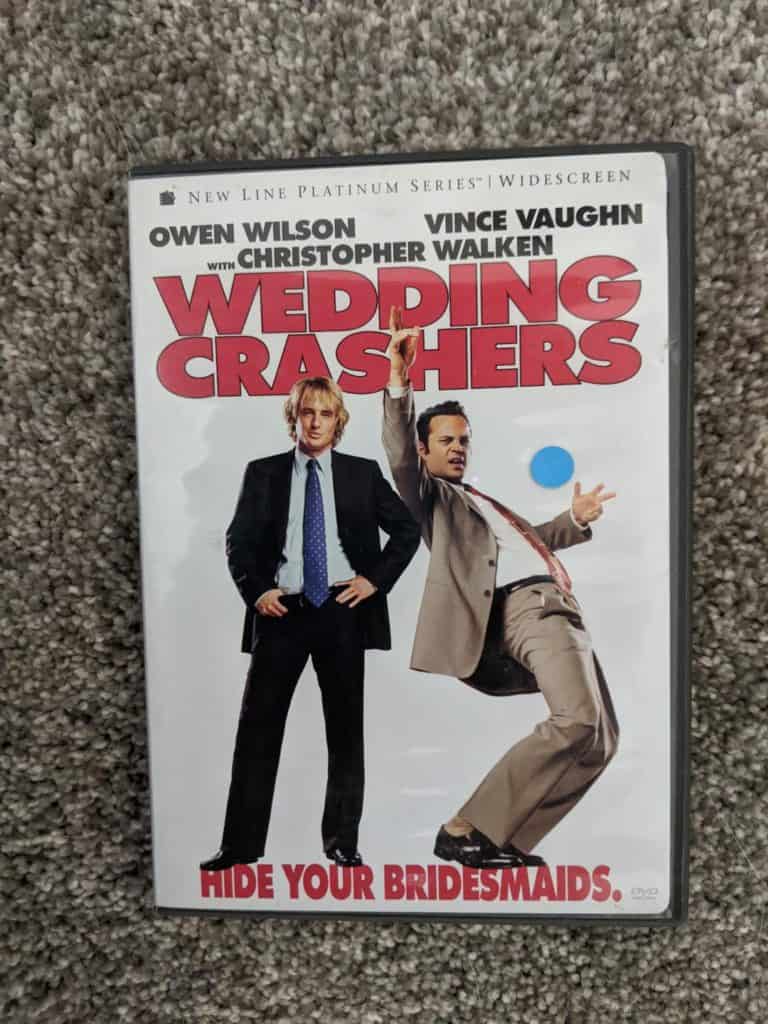
Locks and Keys- The final clue typically ends in a locked box or bag. When they can unlock the box, the certificate or a note is inside congratulating them on finishing the room. But you can also use keys and locks throughout the rest of the room. Use them to lock cabinets, bags, or boxes. Keys are easy to hide under rugs, inside books, or any number of places. Combinations can be written down and hidden or be the answer to other riddles or ciphers.
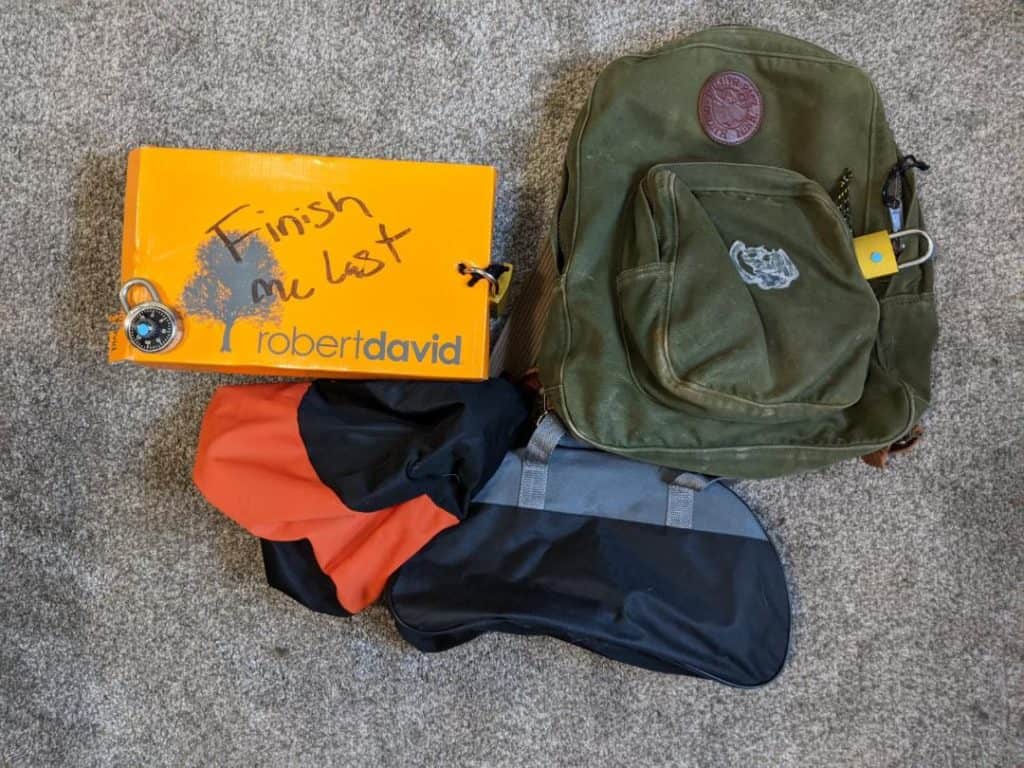
Rosicrucian Cipher can be used as another clue. Once the players decipher it correctly it can spell out the next hint or riddle. You can hide the code and the clue in the same or separate places.
Decoder Message– This is another puzzle that the players will need to decipher. The decoder is made up of two circles, each with letters of the alphabet around the circles. Players will need a 2-letter code to solve it. The 2-letter code contains the 2 letters that will need to be matched up on each circle to decipher the hint correctly.
Pig Pen– is another deciphering puzzle that once done correctly, will spell out the next hint.
3 Number Clue– this is a series of math riddles that will help the players select the correct 3-number code out of several. Each 3-number series will be connected to a different location. Once the correct series is selected, the players will be able to uncover the next clue there.
Hiding Spots– Consider using books, shelves, rugs, cupboards, cabinets, movies, etc. in the room to hide clues, keys, bags, and boxes. You can make the spots as easy or as hard as you would like for your future players.
Laptop– If you are computer savvy, you can even incorporate a computer into the game. Some of the codes uncovered could lead to the password needed to unlock the laptop. The laptop could house more riddles and hints also.
Putting it all together
As you are setting the clues up around the room, make sure to note where everything is on the blueprint. You will also want to make notes on what order the clues go in. The players will find things out of order, but the blueprint and master key will help the room moderator know what piece they may be missing if they get stuck. It will also make it easier to reset the room for future uses.
Remember that you don’t have to go out and spend a lot of money. If you do not have items like puzzles, bags, or locks that you can use, you can find most of these things at your local dollar store or clearance section.
DIY Escape Room Extras
There are several ways you can make your homemade escape room extra special depending on how much time, effort, and money you want to put into it. You can go the extra mile and add decorations to the room to enhance the theme of the game, have prizes available, or even make an introduction video.
Room Decorations
If you are creating a themed escape room, room decorations can add to the perfect atmosphere for the game. Look around to see what you may have in the way of decorations. If it is holiday-themed, you can use the things you have on hand to set up the room. Consider creating low-cost decorations from construction paper and other craft items that you already have in your home. Raid your attic and basement or visit the dollar store. You can even make a playlist for the room to have themed music playing in the background.
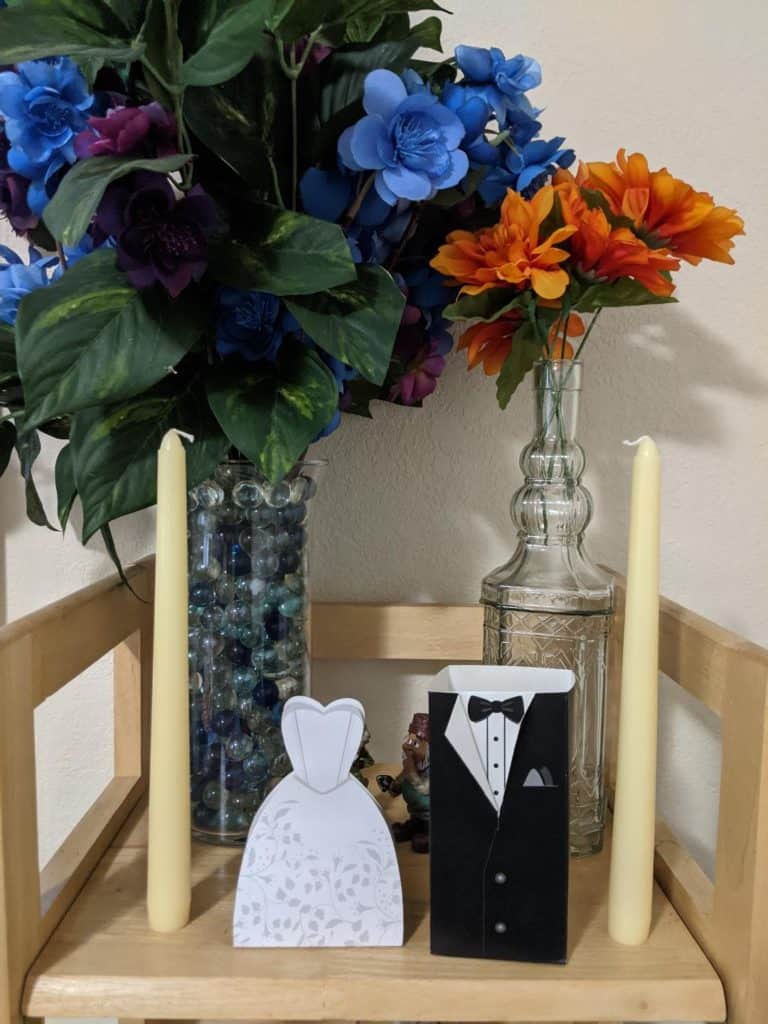
*When we made our Bachelorette-themed escape room, we were able to reuse a lot of the decorations we had for our wedding and receptions. The playlist had all the wedding songs on it. This is the perfect time to bring out items that you saved but don’t have regular uses for.*
Escape Room Prizes
In a professional escape room, if the players have successfully escaped the room within the allotted time frame, they typically get a certificate. When you host an escape room at home, it is up to on how to reward your players.
It is very easy to create a certificate for the winners. Do a quick Google check or use Microsoft Word to get several certificate layouts. With a few adjustments and a printer, you now have an official escape room certificate.

You can also include any number of prizes such as toy trophies or candy for once they escape the room. If you are hosting the room for a special occasion, you can also have prizes hidden throughout the room for the players to uncover as they solve the puzzles. For example, if they have to unlock a bag, box, or cupboard, hide some extra treats or toys in those spots along with the next clue. You can even have the prizes in line with the theme. If it’s for a birthday, the prizes can be party favors or birthday presents depending on who is playing.
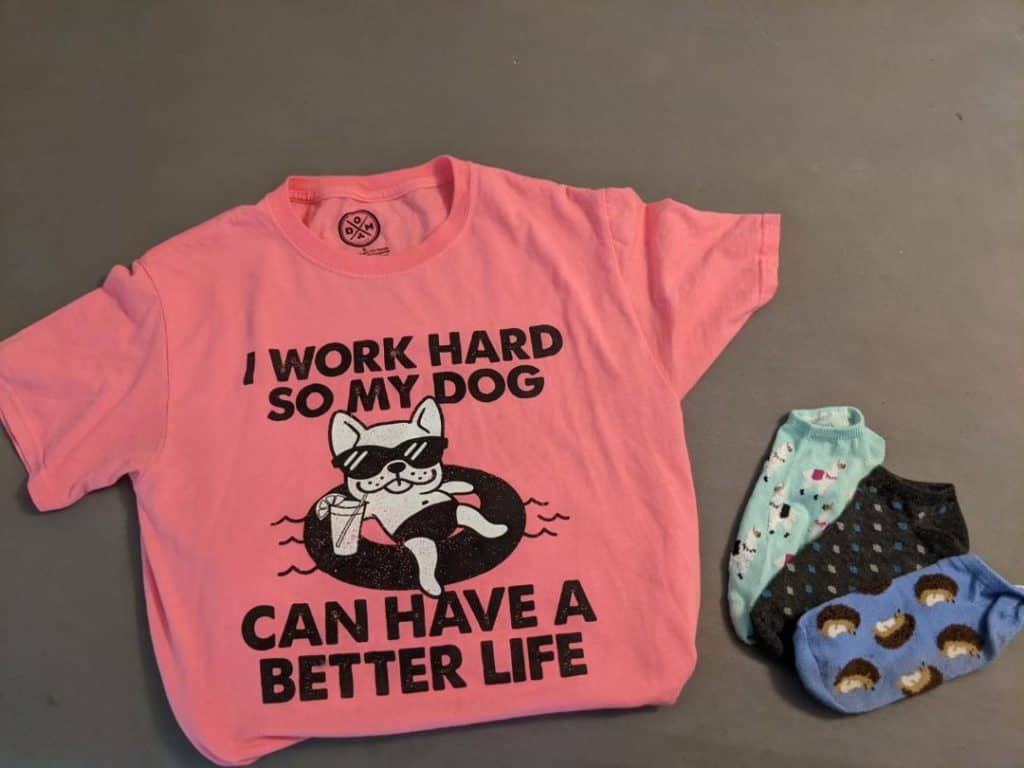
*During the bachelorette party, the bride-to-be uncovered champagne-flavored jellybeans, a veil, ring pop, and shots throughout the room.*
Escape Room Introduction
You will need some sort of introduction for the players before they enter the escape room. The introduction should include the rules of the games and any out-of-bounds areas. To make it more fun, you can have it match the theme of the game or you can even provide the players a video to watch to help set the mood. Use your phone to record a video, edit it, and add special effects with the Video Editor program on Windows. Play the video on your phone, tv, or laptop before or immediately after they enter the room.
Start Creating!
Creating your own DIY escape room is only as hard as you want it to be. I hope this guide helps you create your own escape room so you can have fun with your friends and family at your next gathering. This is a great and memorable way to celebrate any occasion that everyone will talk about for years to come! If you have any questions, feel free to comment below and we would be glad to help!
Do you want a free printable mini-escape room to save you time? Click here to get the pdf file via Google Drive!
Pin For Later:
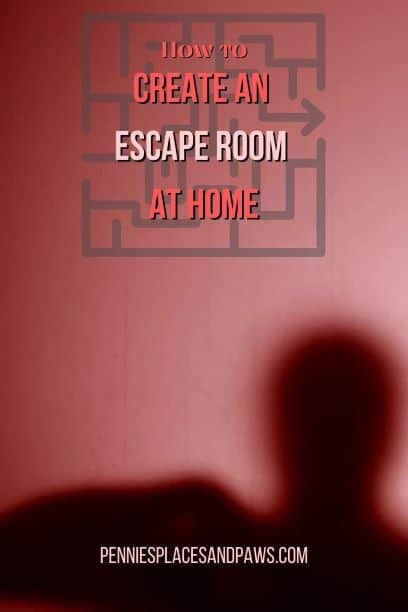
Amazon and the Amazon logo are trademarks of Amazon.com, Inc, or its affiliates.

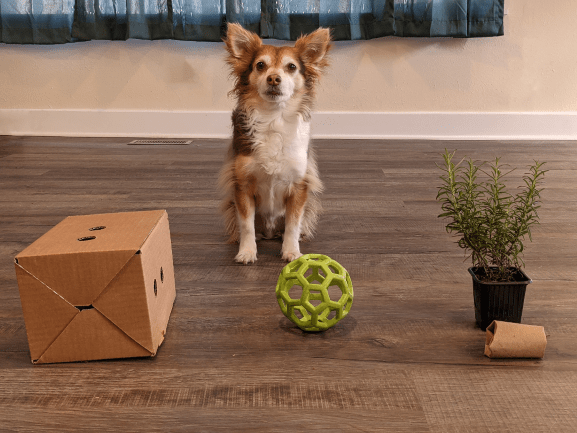



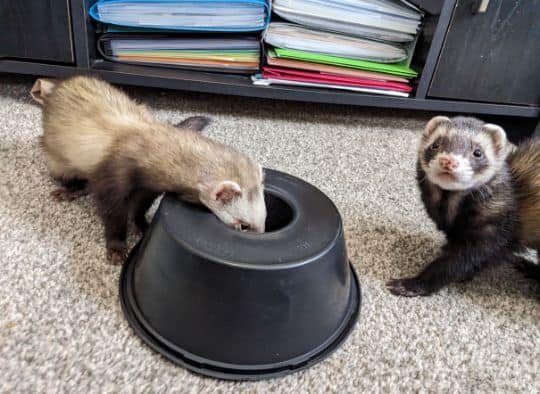

What a cool activity! So creative and fun.
Thank you! I can’t believe how creative my husband can be!!
Oh how fun! I am going to have to try this sometime.
It was so much fun!
My kids love escape rooms! During quarantine, we bought a lot of escape room games and had a lot of game nights!
We are definitely planning on revamping and reusing it often for other scaled down celebrations the next few months!
The escape room sounds like a fun idea. It makes for a different and fun activity for a bachelorette party
This is a great idea! Probably fun to do for an adult party as well, thank you for sharing!
What a fun idea for Halloween!
Perfect remedy for cabin fever! Love it!
We have made a homemade escape room and it was so fun! This looks so creative and perfect for a pre-wedding activity
It worked out perfectly- the bride loved this type of stuff too thankfully!
What a fun idea! That would take so much planning, but totally worth it! And a great bachelorette party idea!
Thanks- I was so glad the bride loved it (whew!)
Great activities and fun for so many different occasions. Not only kids but the whole family and friends would live this!
I love the themed escape room idea! I’ve been meaning to do one with my kids or my girl scout troop – this definitely gave me motivation to get on that. Thanks
Enjoy! I can’t wait to bring it home for a holiday visit with family some day!
What a fun idea! Totally worth it, for the planning that went into it.
Sounds like super fun! Great idea. Thanks for sharing.
This looks like so much fun! I’ve always loved doing treasure hunts as a kid, I’d love to do the grown up version! Great idea.
What a fun idea. I had never thought of this before. Thank you for sharing.
Your welcome! Hope it helps whoever wants to try it themselves 🙂
Great idea and very creative!
What an awesome idea! How fun! We may have to look into this.
Feel free to subscribe and get the free mini version! LOL
Whoa – that’s super involved! I have never done an escape room; it sounds like a blast. To make one at home sounds really hard.
I watched him create the free one we are giving out and I couldn’t believe how much work went into it!
What a unique & wonderful idea that can easily be morphed into any occasion!
I was surprised how easy it was to alter once the basic one was done! Looking forward to adjusting it for birthdays and such over winter
This is such a great family activity, especially since more of us are at home longer now.
Thanks! We thought so too- and winter is looking long up north!
I LOVE escape rooms! What a cool idea to try, that is safe and still just as much fun as the ones you pay to use!
Thanks! I have to give all the credit to my husband Danny!!
It was super fun- especially getting little candy and gifts throughout the room 🙂
So creative! Thank you for sharing!!
How fun! My family loves doing escape rooms. I’ll have to share this with them so we can create one.
Let me know how it goes!
What a fun idea on so many levels!
Interesting. Never heard of this before.
We love it! We had paid and played a few before at local places but now we can set ones up at home for different occasions 😊
This is truly such a good idea! Going to try this out.
This is such a fan idea, I need to think about how to make it toddler friendly 😀
Oh my god! Best boyfriend award goes to your man! This sounds so fun and like such a great way to brighten someones day especially with all the harshness this pandemic has brought with it!
He is pretty great! 😊
What a fantastic idea! I’m definitely going to be trying this with my boys over winter break.
It will be so fun!!
This sounds like so much fun! (Plus, an escape room is an absolute MUST for me right now!)